Control and Coordination Class 10 Science Chapter, Explanation, Notes, CBSE Class 10 Science Chapter 7 Control and Coordination, Explanation, Examples, Question Answers
Control and Coordination CBSE Class 10 Science Chapter 7 - Complete explanation and Notes of the chapter ‘Life Processes’. Topics covered in the lesson are Structure of neuron, EEG, Types of nerves, Spinal cord, Impulse conduction through synapse, Tropic movements, Nervous system and its parts, Photoperiodism, Reflex action, Hormones in humans, Human brain. Given here is the complete explanation of the chapter, along with all the important questions and NCERT solutions to book questions have also been provided for the ease of students.
Control and Coordination Class 10 Science Chapter 7
All humans have a basic need to control and coordinate all the movements occurring in them. One of the most requirements of controlling all the factors of the body is a system of rapid communication. All the cells,tissues and organs do not work independently. They work together as one team. For example during the process of ingestion the eyes locate food, nose register smell, hands pick up the food, mouth opens to eat it, teeth chew it, saliva masticates it. So you can see so many parts are involved in a single task. But there has to be coordination between them. This coordination is known as control and coordination.
What do we mean by control and coordination ?
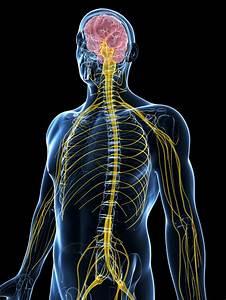
It means working of a body in a systematic manner. Like you all know that we have a complex system but it is of a very advanced type. All the processes taking place in our body are very complicated and still the body is working so efficiently. The whole body systems are interconnected and work like a team. As you all know that suppose you eat food then our stomach should be prepared with gastric juices to digest it likewise there are many processes that are occurring as a result of this control and coordination system. For control and coordination there is a system inside our body which is known as the nervous system and the hormonal system.
Let us first discuss about the nervous system. Like we have discussed that structural and functional unit of any system are its cells. In the same way Cells of the nervous system are called “neurons“ (largest cell of our body).

Structure of neuron
It consist of 3 parts :
- Axon
- Dendrite
- Cell body or cyton
The irregular structure is called a cell body that encloses a nucleus in the neoplasm. From cell body small branches arise called as the dendrite on the upper side. On the lower side it gives out only one branch that is elongated called the axon. The whole neuron is made up of neurilemma. Axon ends into the nerve endings. Function of the dendrite is to receive impulse and the function of the axon is to deliver it to another neuron. That is called the nerve impulse conduction. Neurons link together and form nerves.
3 Types of nerves
- Sensory nerve : It carries the impulses from the sense organs to the brain.
- Motor nerve : It brings the messages from the brain to the sense organs.
- Relay nerve : It serves both the functions.
Neuron is of two types :
- Medullated neuron
- Non-medullated neuron
In medullated neuron a special type of sheath is present called the myelin sheath and is made up of proteins and fats. The points on axon where this sheath is absent is called nodes of ranvier.
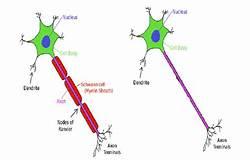
Non-medullated– In non medullated there is no sheath and instead of that neurolemma is quite thick.
Q. Which neuron conducts impulse faster ?
A. As we know message flow is just an ion exchange so in the medullated this exchange only occurs at nodes of ranvier whereas in non medullated it occurs in entire length. So, medullated neurons conduct impulses faster as impulse moves in a jumping manner that is from one node of ranvier to another (Saltatory conduction). Whereas the nerve impulse in non medullated is quite slow.
Impulse conduction through synapse

Under the microscope the axon end appears to be knob like which has synaptic vesicles in it. These synaptic vesicles store a chemical neuro-transmitor. We can clearly see the fluid in the synapse and we can also see the receptors on the dendrites of another neuron. When the impulse reaches the axonal end calcium ions are released from the neurolemma that stimulate the secretion of neurotransmitter from vesicles into the synapse. As the synaptic fluid moves the neuro-transmittor also moves and as soon it touches the dendrite receptors of another neuron the message is delivered. In response the receptors secrete anti neurotransmitter that further stops the secretion of neurotransmitter. Hence this is how the impulse travels through the synapse.
Nervous system and its parts
The nervous system is divided into different parts as shown :

Central nervous system: It consists of two main parts that is the brain and the spinal cord. They actually control the major part that refers to what to do when to do and how to do i.e a response towards all stimulus.
Peripheral nervous system: It refers to all the nerves that enter or leave the brain and the spinal cord. It includes all nerves sensory, motor and mixed nerves. It is further divided into autonomic and voluntary nervous system.
Autonomic nervous system: It controls all the activities that occur in a body by itself. Iit means activities of visceral organs.
Voluntary nervous system: It controls all the activities that occur according to the will of person like sitting, posture maintaining etc.
Both autonomic and voluntary system consist of parasympathetic and sympathetic nerves that are antagonistic in function and show their action on visceral organs.
We have seen there are certain responses that are very fast. For example: If pin pricks your hand ur response is so fast that in a fraction of second you withdraw your hand. These actions are called reflex actions so lets focus on that.
Reflex action
It is defined as the quick, spontaneous and autonomic response. We have receptors in our body that are actually specialized cells sensitive to different stimuli. For example:
- pain –nono-receptors
- pressure –thego-receptors
- temperature –thermal-receptors
Mechanism of reflex action : Suppose you touch a hot substance. The thermo receptors of our hand gets activated and they generate an impulse to central nervous system through a sensory nerve . CNS analyses and interprets its response to effect or organ via motor nerve. In this case the effect on organ is muscles of our hand contracts and we withdraw our hand.
The total path covered in reflex action is reflex arc .
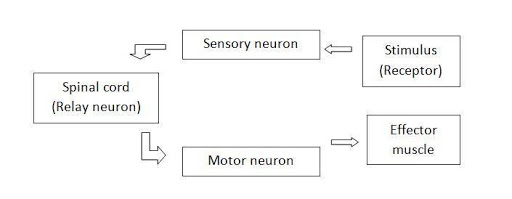
Human Brain
It is the main controlling centre of our body . It is the major part of CNS.
- It is present in a cavity called the skull.
- It is surrounded by a bony box known as the cranium.
- It is covered with membranes called the meninges.
- The fluid present in vacant spaces and between membranes is called the CSF (cerebrospinal fluid).
It is divided into :
Fore brain
Cerebrum : It is the largest part of the brain that is roughly divided into two parts called the cerebral hemispheres . These parts are further divided into small parts that perform different functions. These hemispheres have certain lobes in it that perform certain important functions:
Frontal: It controls the facial muscular activities.
Temporal: It helps in hearing.
Occipital: It helps in vision.
Parietal: It controls the sensation of taste , touch , temperature etc.
Olfactory lobes: They are the prominent lobes and they help in producing sensation of smell
Midbrain : It has no sub division and its function is to control some reflex actions .
Hindbrain
Cerebellum : It is also like cerebrum but not too large. We can say it is the second largest part of the brain. It is also roughly divided into two parts called cere-bellar hemispheres which are further divided into small parts. Their major function is to control body movements and posture movements.
Pons varolii: It is the small ovoid body located near the brain stem. It controls some aspects of respiration.
Medulla oblongata: It is the stem of the brain. It controls involuntary activities like coughing, sneezing, heart beat etc
 ����
����
Whenever we have any disorder or any problem which is related to brain ,eeg is advised.

EEG
�It is the instrument� that help in recording electric signals generated in the brain. In this the electrodes� with� vacuum pads are attached to the scalp of the patient and he is told to relax. This machine records the electric signals and is printed in the form of a graph. The graph consists of different types of waves i.e alpha, beta, delta and theta. The graph is called electroencephalography.

Spinal cord
�It is the extension of medulla oblongata. The point from where it leads into spinal cord is called the foramen magnum. The spinal cord is divided into 5 regions. There are 32 pairs of nerves that are arising or terminating into spinal cord. Spinal cord has fluid CSF in it and from outside it is enclosed by the backbone. The function of the spinal cord is to control reflex actions.� In plants also certain movements are seen which are controlled and coordinated by hormones as their bodies are not so complex and advanced.
Phyto-hormones : The hormones present in plants are called phyto-hormones.
Auxin : It is present on tip of the plant. It helps in growth of the plant (cell multiplication ,cell enlargement,cell maturation), breaks seed dormancy.
Gibberellin : It is also a growth hormone. It also promotes the growth of the plant as it increases the height of plant.
Ethylene : It helps in ripening of fruits and vegetables.
Cytokinin: It helps in closing of stomata and breaks seed dormancy.
Abscisic Acid: It is a negative hormone. It retards growth of plant, promotes senescence and it causes premature falling of fruits and vegetables .
Tropic movements
The movement caused in the plant in response to stimulus are called Tropic movements. The stimulus can be: light, chemical, gravity, water etc.
Phototropism : It is the movement caused in plant or plant parts in response to the light. The stem moves towards light so it is positively phototropic and root moves away so it is negatively phototropic. These movements are fixed and do not change with time or with direction of stimulus.
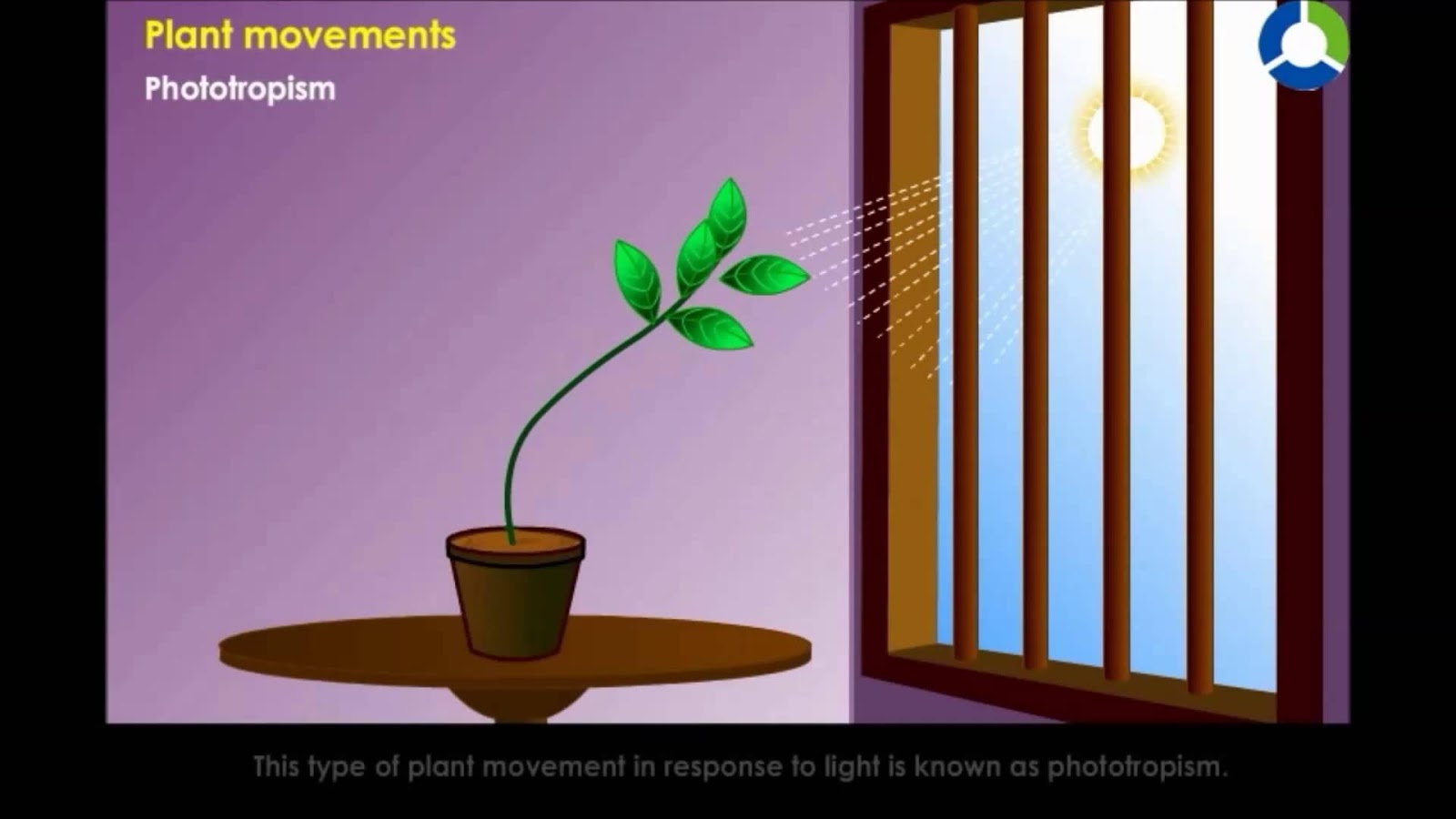
Q. Why plants droop when they are kept inside the room ?
Ans: The plant droops when it is kept inside the room as it doesn't get complete sunlight so the auxin gets accumulated only at one side . Therefore the growth occurs in only that region where auxin accumulates therefore the plant droops.
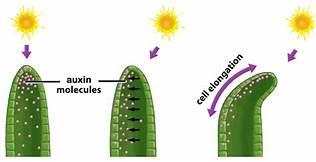
Geotropism : The movement caused in a plant in response to gravity. Similarly in this root moves towards gravity so it is positively geotropic and stem is negatively geotropic.
�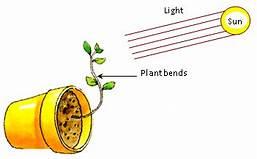
Chemotropism : The movement caused in plant in response to a chemical. For example: growth of pollen tube . as we see in case of pollen tube that it grows and enter the embryo sac through micropyle. This is actually in response to chemical.
�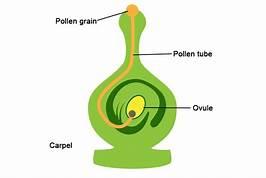
Nastic movements: These are the movements that occur in the direction of stimulus. For example : it is seen in touch me not plant (mimosa pudica). The stimulus for it is touch. When the leaves of touch me not plant are touched it closes .
�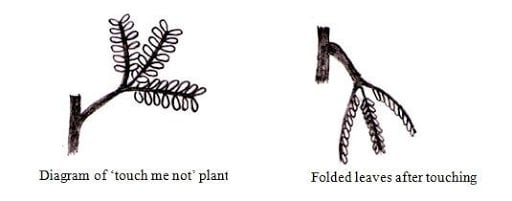
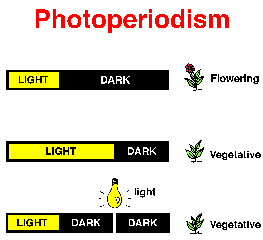
Photo-periodism
It is the period of light for which the plant is exposed to sunlight. Actually there is a blue green pigment called phyto-chrome in the plant that responds to light. Some plants need more light some need less light or some need neither more nor less sunlight. Accordingly plants are classified as: long day plants , short day plants or day neutral plants. It has been seen that flowering plants require less light and more dark period whereas vegetative require more light and less darkness and there are few vegetative that require both in the same amount.
The other system that is responsible for control and coordination in humans is hormonal system.
Hormones in humans
Hormones are the certain chemicals released in our bodies that help in control and coordination of the body. Hormones are secreted by endocrine glands. Actually there are two types of glands in our body :
- Exocrine gland
- Endocrine gland
Exocrine gland Endocrine gland
- They are with ducts (a) they are without duct
- They secrete enzymes (b) they secrete hormones
- Their secretion reach the target organ (c) their secretion reach by blood Viaduct.
(d) Example : liver (d) example : thyroid gland
The study of endocrine glands and their secretion is called endocrinology .
Characteristics of hormones :-
- They are secreted in small amounts.
- They are secreted by endocrine glands.
- They act only on target organ.
- They are either proteinous , steroids etc.
- They reach target organ through blood
- Pituitary gland : It is located in the midbrain. It is also called the master gland of our body as it secrets some important hormones. The functioning of it is controlled by a part of the brain called the hypothalamus.
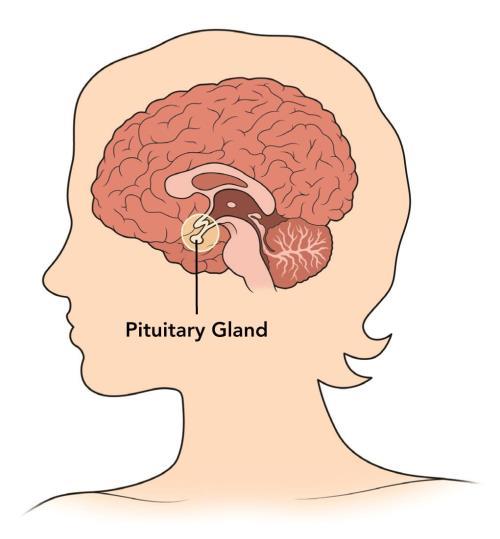
����
- Growth hormone : It helps in growth of body.
If secreted in excess : gigantism
If secreted in less amount : dwarfism
����� (b) Prolactin: It helps in the development of mammary� glands.
����� (c) Oxytocin (birth hormone): It helps in the secretion of milk through these mammary glands.
����� (d) ADH: It helps in osmoregulation.
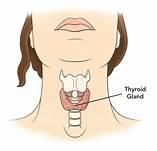
����� (e) Tropic hormone : It looks after the secretion from other glands .
����� (f) Thyroid gland : It is bilobed gland located in the neck. It secretes thyroxine and
Thyroxin: Helps in controlling metabolism of fats , proteins and carbohydrates.
Malfunctioning of this gland causes thyroid in adults and cretinism in children.

Pancreas: It is located below the stomach. It is the only gland that is endocrine as well as exocrine in function. Its endocrine part is ielts of langhams. Hormones secreted by it are :
Insulin: lowers blood glucose level.

Glucagon: Increases blood glucose level.
Deficiency of it causes: Diabetes mellitus.
Adrenal gland: It is located on the kidneys. It secretes adrenaline and corticoid
Adrenalin: It prepares the body for action, it act as a neuro-transmittor, it controls our feelings of love fear , thirst etc. It is called emergency gland and adrenaline is emergency hormone.
����
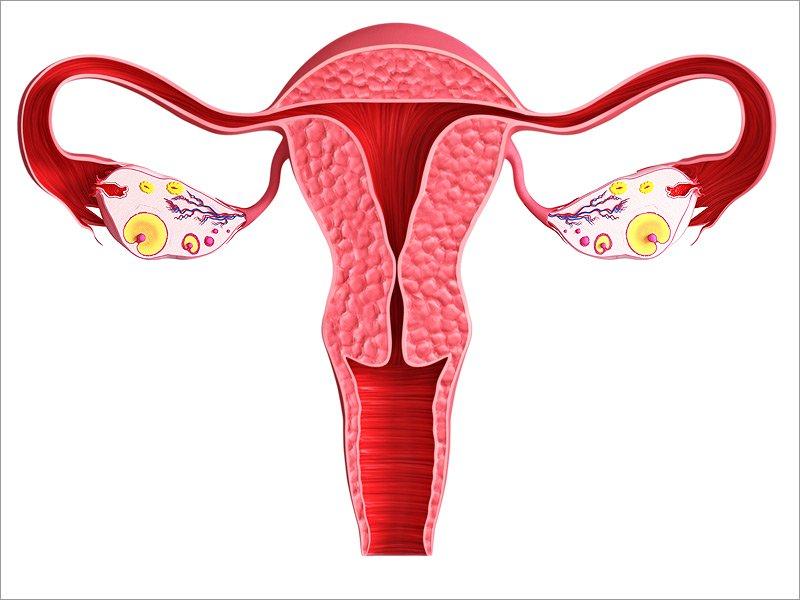
Ovaries : it is female gonad. It secretes oestrogen(female sex hormone) : egg production, control sexual characters in females like widening of pelvic region, development of breast, pubic hairs etc. It also secretes progesterone which controls pregnancy. It also helps in relaxing and in delivery.
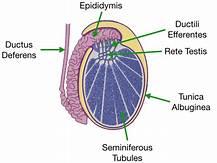
Testis : it is male gonad. It secretes testosterone (male sex hormone ): sperm production , also help in developing sexual characters in males. Like moustaches ,beard, pubic hairs , widening of shoulders etc.
Control and Coordination NCERT Book Solutions
1. Which of the following is a plant hormone?
(a) Insulin
(b) Thyroxin
(c) Oestrogen
(d) Cytokinin.
Ans: Cytokinin
2. The gap between two neurons is called a
(a) dendrite.
(b) synapse.
(c) axon.
(d) impulse.
Ans: Synapse
3. The brain is responsible for
(a) thinking.
(b) regulating the heartbeat.
(c) balancing the body.
(d) all of the above.
Ans : All of the above
4. What is the function of receptors in our body? Think of situations where receptors do not work properly. What problems are likely to arise?
Ans: Receptors are the specialized cells that are sensitive to different stimuli. If receptors don't work properly we would not feel the sensations of pain ,pressure etc.
5. Draw the structure of a neuron and explain its function.
Ans : 1
Neuron helps in control and coordination by passing messages. It has dendrites and axon. The Function of dendrites is to receive impulse and function of axon is deliver it to another neuron that is nerve impulse conduction.
6. How does phototropism occur in plants?
Phototropism: The movement caused in plant or plant parts in response to light is called phototropism. Example: As we know the hormone auxin is present at the tip of the plant but when the plant is kept in room or in dark it droops as it doesn’t get complete sunlight so auxin gets accumulated only at one side . Therefore the growth occurs in only that region where auxin accumulates therefore plant growth suffers.
7. Which signals will get disrupted in case of a spinal cord injury?
Ans: The reflex actions will get disrupted in case of a spinal cord injury.
8. How does chemical coordination occur in plants?
Ans: It occurs with the help of phytohormones like:
Auxin: It is present on tip of plant. It helps in growth of plant (cell multiplication, cell enlargement, cell maturation), breaks seed dormancy.
Gibberellin: It is also a growth hormone. It also promotes the growth of plants as it increases the height of plant.
Ethylene: It helps in ripening of fruits and vegetables.
Cytokinin: It helps in closing of stomata, breaks seed dormancy.
Abscisic acid: It is a negative hormone. It retards growth of plant, it promotes senescence, it cause premature falling of fruits
9. What is the need for a system of control and coordination in an organism?
Ans: As the multicellular body consist of number of components and subcomponents that help in performing different functions. Therefore it is necessary for the various organs together in proper manner and for it control and coordination is necessary.
10. How are involuntary actions and reflex actions different from each other?
Ans :
Involuntary action | Reflex actions |
1. It involves autonomic response. | 1. It involves voluntary response. |
2. It occurs in response to internal stimuli. | 2. It occurs in response to external stimuli. |
3. It is regulated by medulla oblongata. | 3. It is regulated by spinal cord. |
4.Examples: heart beat etc. | 4.Example: Withdrawing hand from hot substance. |
11. Compare and contrast nervous and hormonal mechanisms for control and coordination in animals.
Ans: In the nervous system various neurons are involved . They receive information through dendrites and deliver through axon to another neuron. The information is received by sensory neuron and transferred through motor neurons. In hormonal system ,the hormones coordinate many important activities like controlling sugar level etc. Their response is long lasting and the action of hormones are highly specific.
12. What is the difference between the manner in which movement takes place in a sensitive plant and the movement in our legs?
Movement in sensitive plant | Movement in legs |
1. It occurs in response to external stimuli. | 1. It occurs in response to our will. |
2. The shape of plant cells change with change in amount of water . | 2.It is controlled by the cerebellum. |
3. In it the no nerves are involved. | 3.In it the nerves are involved. |
Comments
Post a Comment